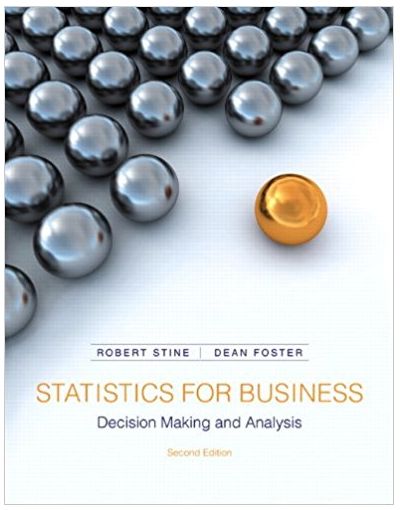A firm that operates a large, direct-to-consumer sales force would like to build a system to monitor
Question:
Estimated Log Profit = 8.94 + 0.29 Log Accounts
This equation explains 18% of the variation in the log of profits. Formulate the MRM with Y given by the natural log of Profit from Sales and the natural log of Number of Accounts and the natural log of Early Commissions. (For a discussion of models in logs, see Exercises 43 and 44.) Notice that some cases have value 0 for early commission. Rather than drop these (you cannot take the log of zero), replace the zeros with a small positive constant. Here we’ll use $1 and continue by taking the log with the value added on.
(a) Examine scatterplots of the response versus the two explanatory variables as well as the scatterplot between the explanatory variables. Be sure to keep all of the variables on the scale of natural logs. Do you notice any unusual features in the data? Do the relevant plots appear straight enough for multiple regression?
(b) Do you think, before fitting the multiple regression, that the partial elasticity for number of accounts will be the same as the marginal elasticity?
(c) Fit the multiple regression that expands the one-predictor equation by adding the second ex-planatory variable to the model. Summarize the estimates obtained for the fitted model.
(d) Does the fit of this model meet the conditions of the MRM?
(e) Does the confidence interval for the partial elasticity for the number of accounts indicate a large shift from the marginal elasticity?
(f) Use a path diagram to illustrate why the marginal elasticity and partial elasticity are either similar or different.
(g) Which would likely be more successful in raising the performance of new hires: a training program that increased the number of accounts by 5% but did not change early selling, or a program that raised both by 2.5%? Can you answer this question from the estimated model?
Fantastic news! We've Found the answer you've been seeking!
Step by Step Answer:
Related Book For 

Statistics For Business Decision Making And Analysis
ISBN: 9780321890269
2nd Edition
Authors: Robert Stine, Dean Foster
Question Posted:





